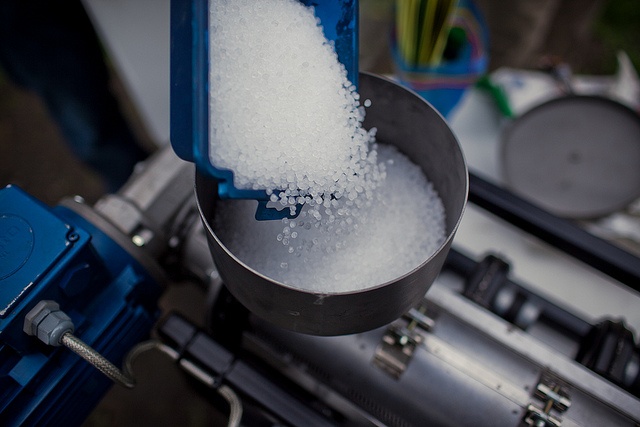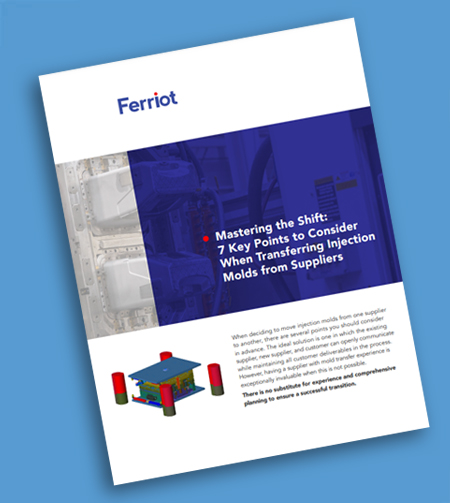Creating a successful injection molded component is never a solo accomplishment – it involves multiple people with a range of expertise. One of the most important areas of expertise is the selection of the resin to be used. You’ll want the resin that best suits your design goals, performance specifications and budget—and a great team of injection molding experts to help you engineer your solution. Here is a quick overview of the 12 steps you and your team can employ as you think about the right plastic for your project:
 Analyze part geometry. Part size, shape and wall thickness could make the part especially prone to warpage, bow, and other design issues. The sooner our engineers can review the part’s configuration with Moldflow® analysis and suggest changes to optimize its moldability, the earlier we can begin to narrow the list of appropriate resins. (Moldflow is plastic injection molding simulation software that helps us determine the best design.)
Analyze part geometry. Part size, shape and wall thickness could make the part especially prone to warpage, bow, and other design issues. The sooner our engineers can review the part’s configuration with Moldflow® analysis and suggest changes to optimize its moldability, the earlier we can begin to narrow the list of appropriate resins. (Moldflow is plastic injection molding simulation software that helps us determine the best design.)
- Define the design goals for the part. What do you hope to accomplish by injection molding this part? Reduce its weight? Consolidate an existing assembly into fewer parts? Cut costs? Something else?
- Describe the key physical attributes required of the finished part. Take the time to define how the finished part will be used and the hazards it must withstand.
- Describe the environment(s) in which the finished assembly/product will be used, stored, etc. Understanding the level of weathering the part will be exposed to will narrow the list of appropriate resins.
- List required approvals. Depending on the part’s use, it may need to be tested and approved by various governmental and/or private agencies.
- Describe the desired finished appearance. Are you attempting to match the color or texture of a component made of another material? Do you need a custom color? Decorative finishes required? Markings and logos?
- Identify chemical exposure, including during manufacturing/assembly and in its intended environment. Knowing the environment simplifies choosing a resin designed to withstand potentially damaging substances like automotive fluids, cleaning solvents, and dozens of others.
- Assess the impact of the part’s electrical environment. What kind of electrical load will it be subjected to? Will the part require EMI/RFI shielding or UL testing?
- Evaluate radiation exposure. Radiation from HID lamps, fluorescent lights, gamma sterilization units and other artificial sources can affect the strength and appearance of the parts. UV-stabilized resins may be the answer.
- Document size and dimensional tolerances. Tight tolerances are often required to ensure proper fit and function of an assembly.
- Note the full range of end-use environment temperatures. A molded part’s impact and tensile strength, creep resistance, modulus, and other material properties often vary greatly depending on temperature. Will your part be used in both Florida and Alaska?
- Estimate the number of parts to be produced in each production run as well as annual usage. This information might help determine mold cavitation and the most appropriate press to use, and help determine the most cost-effective choice of resin.
To streamline this resin selection process and move components into production as seamlessly as possible, Ferriot has developed an Injection Molding Resin Selection Workbook. Click the button to download your free PDF.
If you’re ready to ask specific questions about your injection molded parts development process, complete a request for quote form. Or, if you prefer, call us at (330) 786-3000 for immediate attention.





